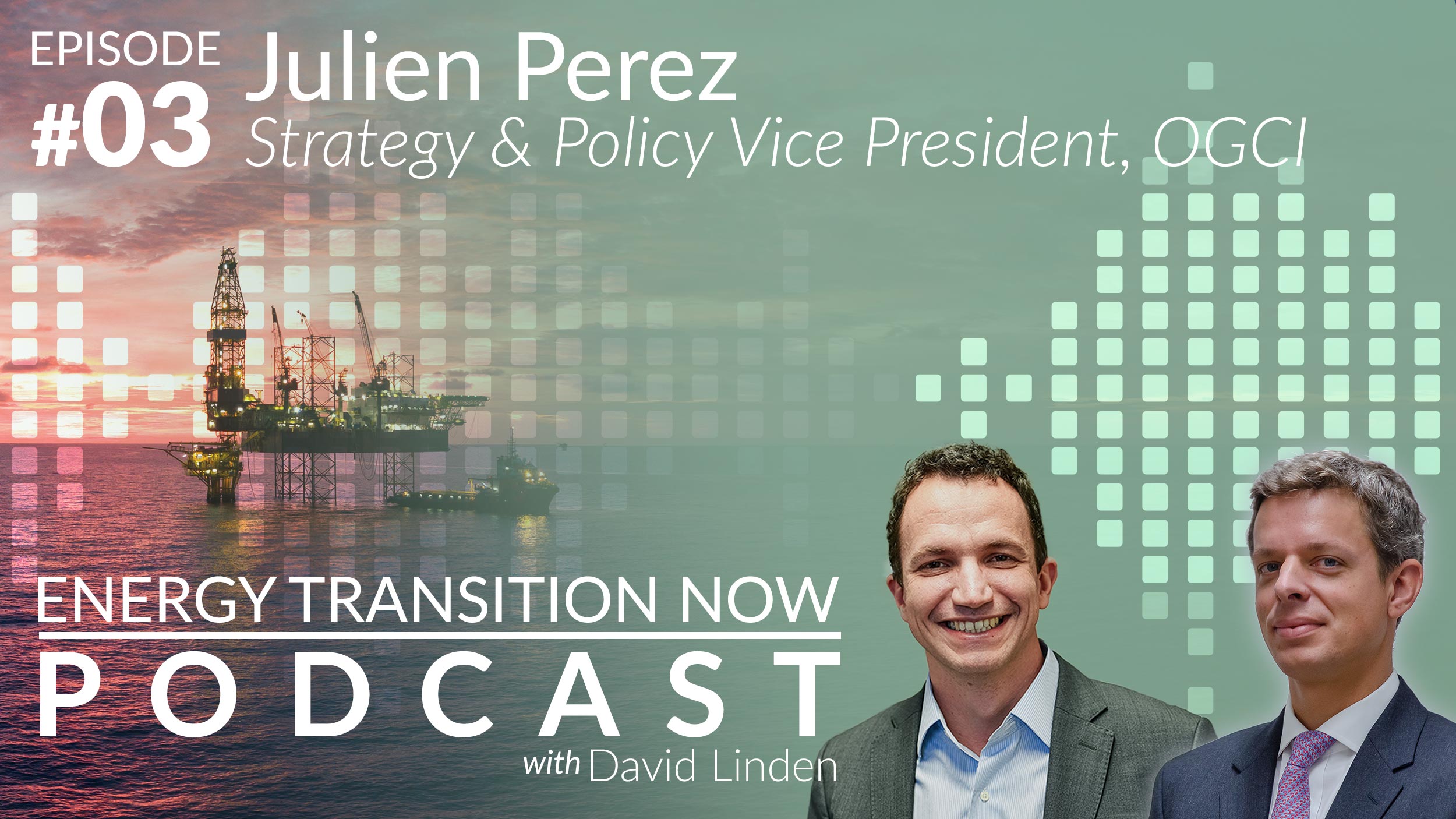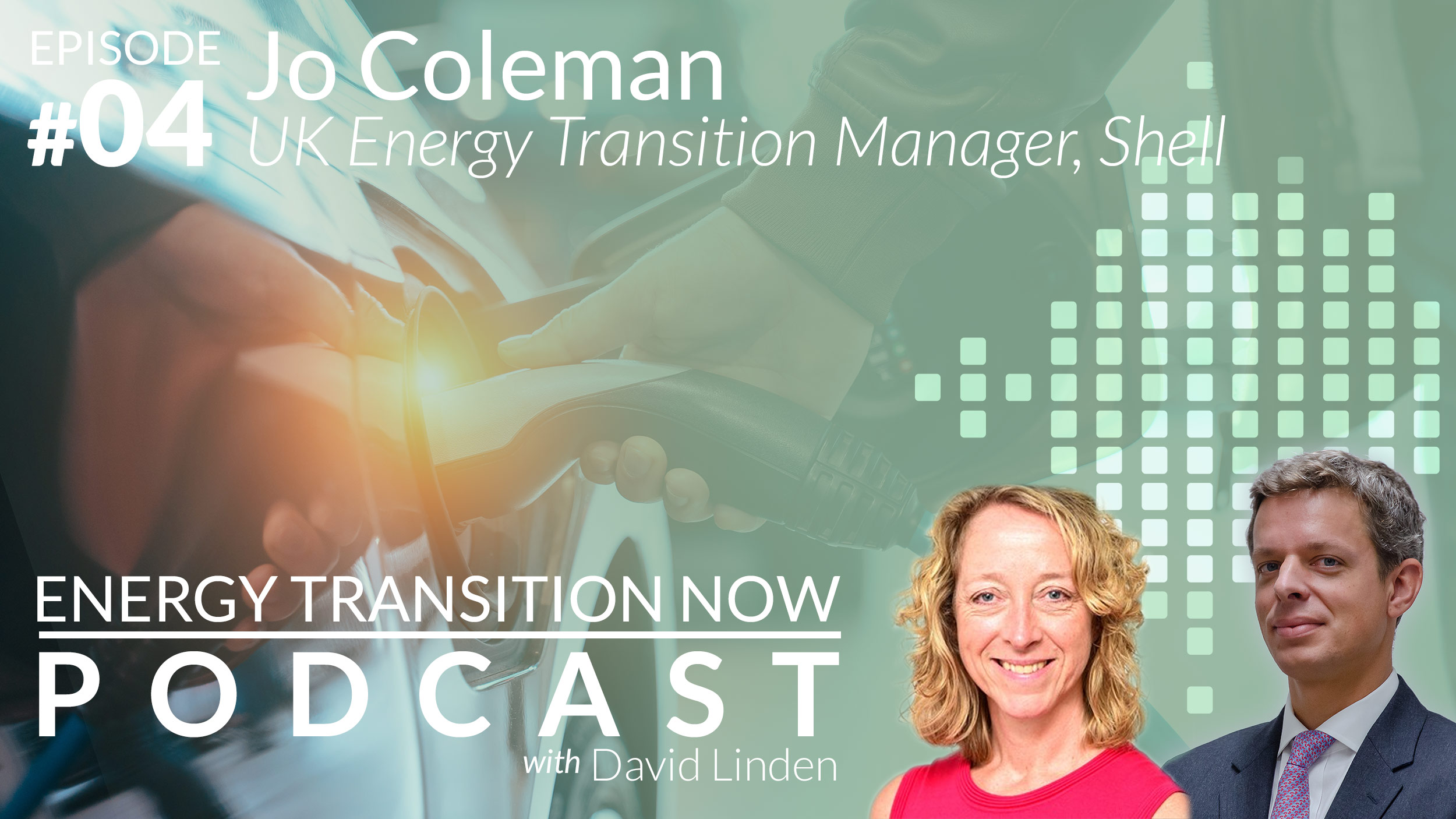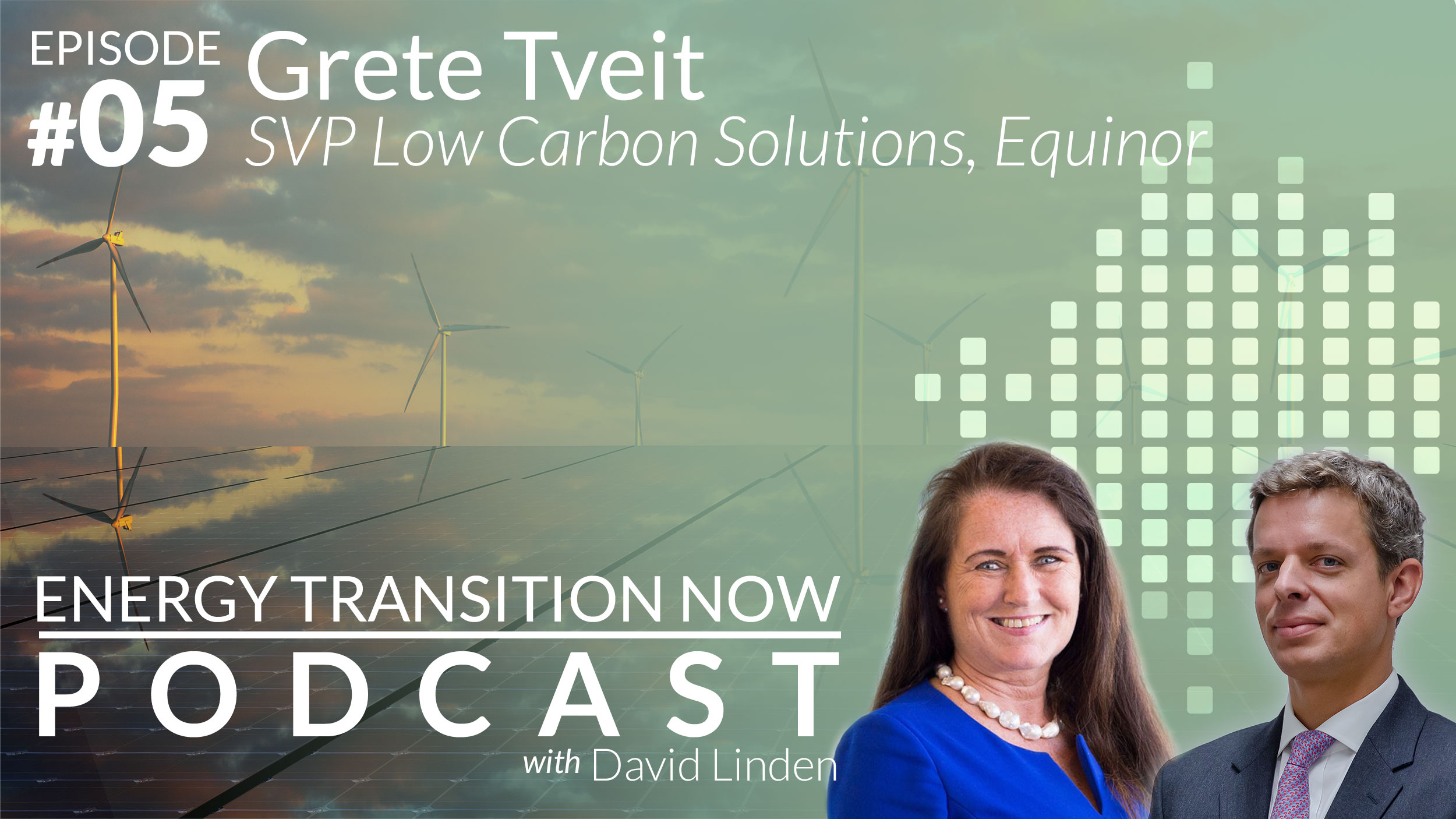Energy Transition Now - Episode 2 with Iman Hill
In the second episode of Westwood’s Energy Transition Now podcasts, David Linden speaks with Iman Hill, Executive Director, International Association of Oil & Gas Producers (IOGP).
During this episode, Iman raises the current misconception around the oil and gas industry, and how both sides of the story need to be told in the face of a changing energy industry. David and Iman discuss the role the IOGP and it’s members have in helping move the energy transition forward, but also the challenges and the risks the industry faces – including on greenwashing and stranded assets – especially following the publication of the IEA’s latest Net-Zero scenario.
About Iman

Iman Hill was appointed Executive Director of the International Association of Oil & Gas Producers (IOGP) in December 2020. She also serves as non-executive Independent Board Director of Oil Spill Response Ltd. (OSRL).
Iman is a Petroleum Engineer with 30 years’ experience in the oil and gas industry with extensive global expertise in the technical and commercial aspects of the petroleum business, in particular field development, capital projects and production operations. Iman’s experience has been gained in the Middle East, North and West Africa, South America, the Far East, and the North Sea in a number of diverse settings from onshore to ultra-deep water.
She began her career with BP and worked in a variety of technical positions before becoming a Senior Reservoir Engineer. In 1995 she joined Shell International where she held positions such as Senior Regional Adviser Africa to the E&P CEO and the Chairman of Shell as well as GM Shell Egypt and Chairwoman of Shell Companies in Egypt. As Senior Vice President Brazil, Iman also led BG Group’s first ultra-deep water development of the super-giant Santos Basin pre-salt fields. Additionally, at BG, as SVP Developments and Operations, Iman was responsible for driving top quartile performance in maturing developments to sanction, well engineering and operations. Iman has also held the positions of VP Africa at Sasol and Technical Director, GM UAE and President Egypt for Dana Gas in the UAE, where she also ran the one of the Egyptian joint ventures in her role as Managing Director and Board member of The Egyptian Bahraini Gas Derivatives Company.
Iman also serves as a NED on the Board of United Oil and Gas. She is Egyptian and a mother of five.
DL: Hello everyone. I’m your host David Linden, the Head of Energy Transition at the Westwood Global Energy Group and you’re listening to only the second in our series of ‘Energy Transition Now’ Podcasts, where we discuss what the energy transition really means for the oil and gas and broader energy industry.
On our last Podcast, we had the sustainability adviser, Will Day, on the show, who talked us through what sustainability and net zero really means and the implications this has for economies and hydrocarbons, specifically. Thank you to everyone for their feedback to that Podcast. Please do keep it coming; we really welcome your comments.
Today, we will look more at the response of the oil industry to the transition or transformation, depending on how you like to view it. And, for that, we have the wonderful Iman Hill here, who is the Exec Director of IOGP, the International Association of Oil and Gas Producers. Now, Iman is a petroleum engineer with 30 years of experience in the oil and gas industry. She has expertise across both the technical and commercial aspects of the petroleum business that she’s gained through a number of global diverse roles that’s ranged across the world but, also, from onshore all the way to deep water.
Iman was appointed the Exec Director of IOGP only recently, back in December last year and she also serves as the non-exec independent board director of Oil Spill Response Limited, as well as the non-exec director on the board of United Oil & Gas. She’s Egyptian and a mother of five. So, in my mind, Iman has a fabulously deep and diverse international background that makes her ideally positioned to have her speak to us about the future of the industry.
Iman, as always, a very warm welcome; it’s really great to have you here.
IH: Thank you very much, David. I’m very, very pleased to be here and thank you to Westwood Global Energy Group for the invitation.
DL: It’s an absolute pleasure. Let’s get into the questions. So, in terms of setting the scene, maybe, for the listeners themselves, can you just explain what the IOGP actually is and what it stands for?
IH: Yes I’d love to do that, thank you, David. The International Association of Oil and Gas Producers is the global voice of the upstream industry. One of our key objectives is to enhance understanding of the contribution that oil and gas makes to everyday life and to fulfilling global energy demand, as well as the critical role the industry plays in the transition to a low carbon future. We work on behalf of the world’s oil and gas companies and organisations, catalysing step-change and safety, sound environmental management and standardisation in engineering, to reduce costs and schedule in capital projects; and to enable the supply chain to be more efficient.
David, the Association comprises many of the world’s leading publicly traded and state owned oil and gas companies, industry associations and major upstream service companies. Our 70 plus members produced over 40% of the world’s oil and gas and operate in all producing regions globally; and we published around 40 good practice and guidance documents per year, working with almost 2,000 industry experts from our member companies, in 11 committees and about 80 sub groups. From our headquarters in London we address a variety of global and regional bodies, including UN agencies, the World Bank, ISO, the International Regulators for OSPA and others. And this is where all our technical work is carried out.
Our Brussels office provides an essential conduit for advocacy and debate between out industry and the European Union and its policy makers. And we have, also, a crucial presence in Houston, to liaise with regulators, members and to collaborate on solving issues for our industry with other bodies, such as API, to benefit member companies in the Americas, both north and south. So, in a nutshell, that’s IOGP.
DL: Thank you. And just for clarity, I guess then, is it that every single upstream member in the world is part of your association or what sort of representation do you have?
IH: Not every single company producing oil and gas is a member of our Association, but the majority of…all of the national oil companies, the international energy or oil companies and all the way through to small independents that, you know, really benefit from the work that we do, in terms of the deliverables that the organisation puts out in the industry. So we’re always working to spread out good practices and always working to really enhance the membership and make sure that our products and deliverables are spread across the world as widely as possible.
DL: Certainly, I think, since you’ve taken on this role and maybe even prior to that, it’s worth saying that you’ve spoken a lot about the misconception around oil and gas. Can you maybe tell me a little bit more about this?
IH: Well, thank you for that question, because this is really something very, very close to my heart. I’ve been working in the oil and gas sector for over thirty years and, personally, I’m very proud of the contribution that this industry makes to economic development across the whole world, and to improving the lives of billions of people every single day. Let’s just consider the human development index, which looks at the living standards, health and education of countries. There is a very, very clear link between access to affordable, reliable energy and a country’s position on the index. But, of course, I’m not deaf or blind, I read the news articles with the awful headlines and I hear the voices arguing that we don’t have a justification to exist anymore. The public perception, I think, has always been an issue for our industry. We’re seen as evil, outdated, destructive and there are many bogus, non-facts that are being said about oil and gas.
So this is nothing new. We’ve experienced this for decades and, to some extent, David, it has silenced us. If you’re constantly being accused of being the bad guy, you think twice before getting into any discussion, raising your voice and trying to bring across your point of view. But this has become increasingly dangerous, because public perception drives political decisions more than ever today. And what I’m pushing and advocating for is a balanced dialogue. We, in the industry, are driving forward with many actions to produce ever cleaner hydrocarbons. We support the Paris Agreement and the EU Climate Neutrality 2050, and we contribute to the United Nations Sustainable Development goals. We don’t deny that our industry, like many other industries, including agriculture and farming that puts the Sunday roast on the table, have an impact. But, instead of vilifying fossil fuels, isn’t it better to recognise that what is needed is coordinated action? Businesses and government working together, much more international cooperation, to agree and accelerate the actions needed to reduce global emissions; and working together with the common purpose of restricting the global rise in temperatures to 1½ Degrees Celsius, as called for in the Paris agreement.
DL: Super, thank you, Iman, it’s very interesting and I recall, Will Day, last time around on this Podcast also said, ‘the bad guys’, right? So it’s that label that has been given, but it’s also interesting to say, well, you need to engage and collaborate on some of these things. But, I guess, that also requires you to have a plan as to how to do that effectively and that’s come in different bits and pieces at different speeds, maybe, from the oil and gas industry, as well as obviously other parts of the economy, as well. I understand, though, that the IOGP is now putting that into a much better sort of framework and structure, as to how to engage in that, so to speak, your own energy transition strategy. Is that something that you can maybe talk to us about, as well, about what is it that IOGP and, I guess, your members are…you know, what are you focusing on, as part of that framework, in that dialogue and in that structure, when you are collaborating and working with other people?
IH: Thanks, David, for the question, because one of my first tasks was to kick off and oversee a strategic review; the last one was done in 2016. We’ve been working to answer key questions around the current and future shape and core areas of focus for the Association, to ensure that our deliverables remain valuable and relevant to our members, as they, also, shift their strategies. Our work during this review has addressed the expected challenges and transitions in the industry and across our membership. And it’s also included an assessment of the Association landscape, to understand duplication and overlap, which we want to avoid as IOGP. So one of the governing principles of this strategic review was that it would be based on member input, so we’ve collected a lot of quality data and insights from our member companies and a diverse group of other external stakeholders, in order to assess our strengths and our future role in serving, not just our members, but industry and society, as a whole.
Without giving away too much away ahead of our formal announcements, one trend that is absolutely crystal clear is the work that we’ve been doing on the low carbon agenda is going to ramp up substantially. We’re, also, making changes that will support our ability to respond much more quickly to our members’ needs…more to come, David.
DL: I’m looking forward to it. I guess, the question then is you’re building frameworks and working out ways of collaborating, but there are obviously practical things that your members need to be doing, in that sense. So what is it an oil and gas company should actually be doing in this energy transition? Is it about trying to create a carbon-neutral barrel of oil, in that sense, as some of the headlines have recently been? Or is it about divesting oil and going straight into renewables; or is it both?
IH: That’s a great question, again, and I think, if I think about the oil and gas industry and the role that it plays in the energy transition, the industry plays a leading role. We’ve got everything that we need in this industry to actually significantly help achieve the Paris Agreement goals. And we’re absolutely committed to doing just that. But what I think is really important is to understand that there’s more than one way to transition and more than one way to achieve that lower carbon future. I’m going to give you some concrete examples in a minute but, just in terms of the overall themes or things that we’re working on, as an industry, and the way that we’re contributing in various ways, we are, as you will know, reducing our own emissions, including flaring. We’re providing cleaner energy. We have been instrumental in supporting the coal to gas switch and, bearing in mind that coal is the most polluting energy source, that switch from coal to gas is a fundamental necessary first step for many, many developing countries.
We’re investing in renewables, including bio-fuels. We’re deploying carbon capture utilisation storage, and we’re investing in clean hydrogen. We have all the experience, the know how, the data, the engineering capabilities, project management skills and investment capability, to really accelerate the actions needed to reduce global warming; and now I’m going to give you a view concrete examples, if you will allow me, David.
DL: Of course.
IH: If we look at all the companies that we have traditionally called IOCs or International Oil Companies, such as BP, Shell, Chevron, Exxon, Total, etc., all of them are members of IOGP and their strategy today and into the future is to reshape their businesses. And they’re working on three main axes, all in support of the Paris Agreement goals and in support of their own net-zero pledges. And those three axes are: lowering carbon intensity and existing operations costs efficiently; recognising that the world is electrifying and that renewables are the clear front runner for supply, they are increasing investments in renewables; and then investing in low carbon technology, such as carbon capture, utilisation and storage and hydrogen, to enable rapid scale-up of commercial solutions…so some specific examples.
I mean, look at all the partnerships that BP has gone into recently; notably, the one with CEMEX, to decarbonise heavy industry, and which is one of the most difficult sectors to tackle. Also, BP’s plans for the UK’s largest hydrogen project in Teesside that will produce up to 2 Gigawatt of blue hydrogen, which is 20% of the UK’s hydrogen target by 2030. And, also, supports the development of Teesside, as the UK’s first hydrogen transport hub. Or, for example, Shell’s project quest in Canada, which has sequestered over a million tons of CO2 per year since it started in 2015. In Germany, Shell expects its 10 Megawatt green hydrogen electrolyser to start production this summer. In Ireland the company is a 51% shareholder in the 300 Megawatt Emerald floating wind farm, which is in the early stage of development.
If I move on to Exxon, ExxonMobil have captured 120 million tons of CO2 since 1970. That’s the equivalent of taking 25 million cars off the road for one year; and the company continues to capture 9 million tons of CO2 per year. Total, as you’ve heard – we’ve all heard – has indicated that it intends to become a world leader in renewables, in line with its strategy to transition into an increasingly broader energy company by 2030. Since 2016, the company has invested $8 billion in renewable power, increasing its gross renewable capacity to about 7 Gigawatts.
And, then my final example is for Chevron. Chevron is a founding partner of the Environmental Partnership, which is an industry initiative aimed at accelerating the adoption of practices that reduce methane emissions. Today, its companies in this initiative, David, have conducted more than 184,000 leak detection surveys and replaced more than 13,000 pneumatic controllers, with lower or non-emitting technologies. In December last year, this partnership adopted a programme to advance best practices that reduce flare volumes, promote beneficial use of associated gas, improve flare reliability and efficiency when flaring does occur, and collect data to calculate flare intensity, as the key metric, to gauge progress from year to year. And, quite honestly, these examples only illustrate a miniscule fraction of what our member companies doing to decarbonise our world. We could be here for hours talking about this subject, David, but I’ll stop now.
DL: Thank you, Iman, that’s a really good set of examples of how active the industry has been. I wonder whether, though, it’s worth just taking a look at…we’re talking, I guess, on the morning at the moment where the IEA has published its latest scenario; it’s net-zero scenario out to 2050, which is ultimately trying to align with the target of getting to net-zero, which is a 1.5 degree world by 2050. And one of its key milestones within that is the year 2021 to be the final year of new exploration, in that sense…so no new developments beyond things that have already been sanctioned. That, in one sense, does put the core business model of a number of oil and gas companies ‘at risk’, I suppose, is the words to use; and, therefore, maybe pushes them down the path of needing to be part of this decarbonisation, anyway. Yeah, I’d like to talk a little bit more about those risks, if possible but, just beforehand, what are your thoughts on that IEA scenario; I appreciate it’s been a few hours since it’s even been released to the world but would just be useful to hear your thoughts on that initial release?
IH: Well, thank you. So, first of all, I want to say that I have enormous respect for the work and the scenarios that are created by the IEA. They have a lot of experts and have really served the world well, in terms of looking at and having the foresight around what could be certain milestones in the journey. You mentioned that this may force companies in the sector to really be part of it. I want to say, very firmly, that we are part of it. We are absolutely part of it and, actually, an integral part that will help to accelerate that journey. I think it’s good to put into context that statement around ‘no further exploration and no further investment in new oil and gas projects from 2021’, because the report itself from the IEA is very explicit about certain things that have to happen; enormous things that have to happen, to enable that. And let me just touch on those, if I may.
In the near term, the report describes this net-zero pathway, which needs massive and immediate deployment of all available clean and efficient energy technologies which is combined with a major global push to accelerate innovation. And in the report, if you’ve had a chance to look at it, they’re talking about annual additions of solar photovoltaic to reach 630 Gigawatts by 2030, and wind power to reach 390 Gigawatts. I mean, together, this is four times the record level set last year. And, if we look at solar PV, it’s equivalent to installing the worlds’ current largest solar park, roughly, everyday; so…and then a major worldwide push to increase energy efficiency is also a part of the underlying and essential part of the fundamentals of what would need to happen. So we need to see the global rate of energy efficiency improvements averaging 4% a year, from now, to 2030; and this is about three times the average over the last two decades.
The other thing that will be required is a massive investment in technology and a very hard and sustained push on innovation; because another thing that the report says is that much of the global reductions in CO2 emissions, between now and 2030, come from technologies that exist today but in 2050, the IEA say, that almost half the reductions come from technologies that are, currently, only at the demonstration or prototype phase; which means that governments will have to immediately increase and reprioritise their spending on research and development, as well as putting in place enabling policies and incentives for the deployment of cleaner energy technologies.
So I think an enormous amount has to happen before the pathway that’s described can actually come to life. And, maybe, a bit later on we can also talk about one of the other IEA scenarios, but I’ll just pause there, in case you’d like to take the conversation in another direction.
DL: Thank, Iman. Yes, I think it’s another whole Podcast series, almost, just talking about scenarios because there are fundamental differences between, let’s say, IRENA, IEA, BP, Equinor, etc.; all these different scenarios, so they’re available and the IPCC’s scenario as well, who all aim for net-zero but take quite different paths to get there. And I think that’s almost a Podcast series in itself, so you’re right. There’s a lot that needs to happen, but you can also get there in very many different ways. A question, though, more broadly…it doesn’t always matter which scenario you take as, I guess, the long-term future is a decline in demand in some shape or form. What, in your mind – you know, I’ve talked about risks earlier – when you talk about the risk to things, like stranded assets or the risk of investing in new gas and LNG, when that may or may not be needed in the same way that we envision it now, how should the industry think about that; and is that a risk really worth considering right now?
IH: Well, I think the industry has been considering this for quite some time, and that’s why you see the industry really pivoting in terms of strategy and really looking at becoming much more integrated energy providers. But, you know, I think the important thing here is that a scenario is a scenario and we can use it to plan or, at least, use it to make our businesses robust because – and I am going to mention this now – there is another IEA scenario, which is a sustainable development scenario, which predicts that oil and gas will account for 46% of global energy supply in 2040. So we need to understand that, actually, in reality, it cannot be really an either/or. The world needs energy and I think more and more. You know, if we think about the global population, which is continuing to rise, when we’re all working hard on making the low carbon future a reality. And so what I would say, actually, is let’s be sensible and enable every single technology or cleaner source of energy; with the right policies.
And, if I can just touch on, for example, carbon capture utilisation and storage, David, which is touted as the oil and gas sector’s attempt to keep itself alive – in some corners of the world – and, therefore, not to be supported. But the reality is that this is a huge enabler, you know, so I want to talk about the things that can really drive us forward, as well as the risks, but really driving us forward. Because, think about this technology, it is key to reducing emissions from heavy industries, which account for almost 20% of the global CO2 emissions; and it’s the most cost effective approach in many regions, to kerb emissions in iron, steal and chemicals manufacturing. It can be retrofitted to existing power and industrial plants, which could otherwise emit 600 billion tons of CO2 over the next 50 years. And it can really support rapid scaling up of low carbon hydrogen. So, you know, it accounts for an awful of lot, up to 15% of emissions reduction, potentially, in this IEA sustainable development scenario. And we could have really achieved much more with CCUS, if we’d had the political support that was required.
So I’m trying to be as concrete as possible around what can be done to really accelerate the energy transition and our march towards a lower carbon future. And, as far as the risks, I think, in the oil and gas sector we’re being very good at looking at potential risks and managing those risks…in the end, you know, we’re focused on making sure that we continue to, sustainably, produce a return for our shareholders. And so it depends, do you believe that we should not invest anymore in new oil and gas or do you believe that the world will still continue to need to meet half of its global demand with oil and gas and, really, you need me to make the business robust for somewhere, probably, in between.
DL: Very good, Iman. Thank you. Yes, I think that word ‘sustainably’ is one that’s always fascinating because, as Will said last time as well, what is sustainability?; it’s about ensuring that there is also a future and, obviously, the industry is also ensuring that, yes, meeting the needs of today but, also, ensuring that you can meet the needs of the future in a sustainable way, ultimately, as well.
IH: Yes, and remembering that…you know, in some parts of the world we’re very lucky because we’re far up the economic development curve, etc. But there are 800 million people that still don’t have access to affordable, reliable energy and billions more than don’t have access to clean cooking, you know, so what do we do? Do we just leave all those behind?
DL: Excellent rhetorical question, I think. Okay thanks, Iman. So concretely, in that sense, what does the oil and gas industry now need to do to, ultimately, look credible to those investors that are looking for a sustainable return and, also, not to be accused, ultimately, of ‘greenwashing’?
IH: Yes, that good word. Let me tackle the greenwashing point first, David. Our sector, I think, is very diligent about governance and very serious about ESG as an integral and core part of how we do our business. Companies have shareholders that are increasingly vocal and holding the companies they’ve invested in to account. Many of us have children or grandchildren, so, by which stretch of the imagination, are we; (1) being disingenuous with our shareholders, customers and our employees and; (2) monsters that simply don’t care if our children and grandchildren find themselves on an uninhabitable planet.
So, coming back to reality and the answer to your question, we need to continue to put our own house in order; so further reducing the greenhouse gas emissions, both CO2 and methane, from our operations. Reduction of flaring is a massive opportunity and one that we’re working on very hard. And many parts of the world, where we’re operating in joint ventures, this means that government have to agree to plans for investment in infrastructure that are proposed by the international companies producing in those countries, so that flaring can be eliminated. And then, very quickly, coming back to emissions, emissions reduction is a top priority for the industry and IOGP supporting its members in these efforts; and, just a couple of examples for you. With OGCI and IPIECA, we’re working on recommended practices for methane emissions detection. We’ve been a supporting organisation of the Methane Guiding Principles, since 2018; and we’re also going to complete a flaring management guideline with the World Bank’s Global Gas Flaring Reduction partnership, that will be relevant for governments, regulatory bodies, as well as the oil and gas industry.
And, finally, we need to continue to do work that is based on data and science, and to innovate so that we can deploy the technologies we need rapidly and at scale; and then to speak up, to set the record straight and balance the non-factual rhetoric with our voice that is completely based on data and facts, so that we enhance understanding of the enormous contributions of our industry to the low carbon future that we all want.
DL: Thank you, Iman. And I’m afraid that’s all we have time for, but I really do appreciate the time you’ve taken to talk us through, both what the IOGP does – I think the misconceptions around oil and gas and the role it can still play, going forward but, also, the challenges and the risks it faces in that path, to make sure that it has a voice but, also, ensures that it contributes to the sustainability of the planet. Thanks very much.
IH: Thank you very much, David. Thank you. I really enjoyed talking to you.
Copyright and Reproduction
This website contains material which is owned by or licensed to Westwood Global Energy Group. This material includes, but is not limited to, the design, layout, look, appearance and graphics. You may not modify, reproduce or distribute the content, design or layout of the Website, or individual sections of the content, design or layout of the Website, without our express prior written permission. For media enquiries, please contact [email protected]








